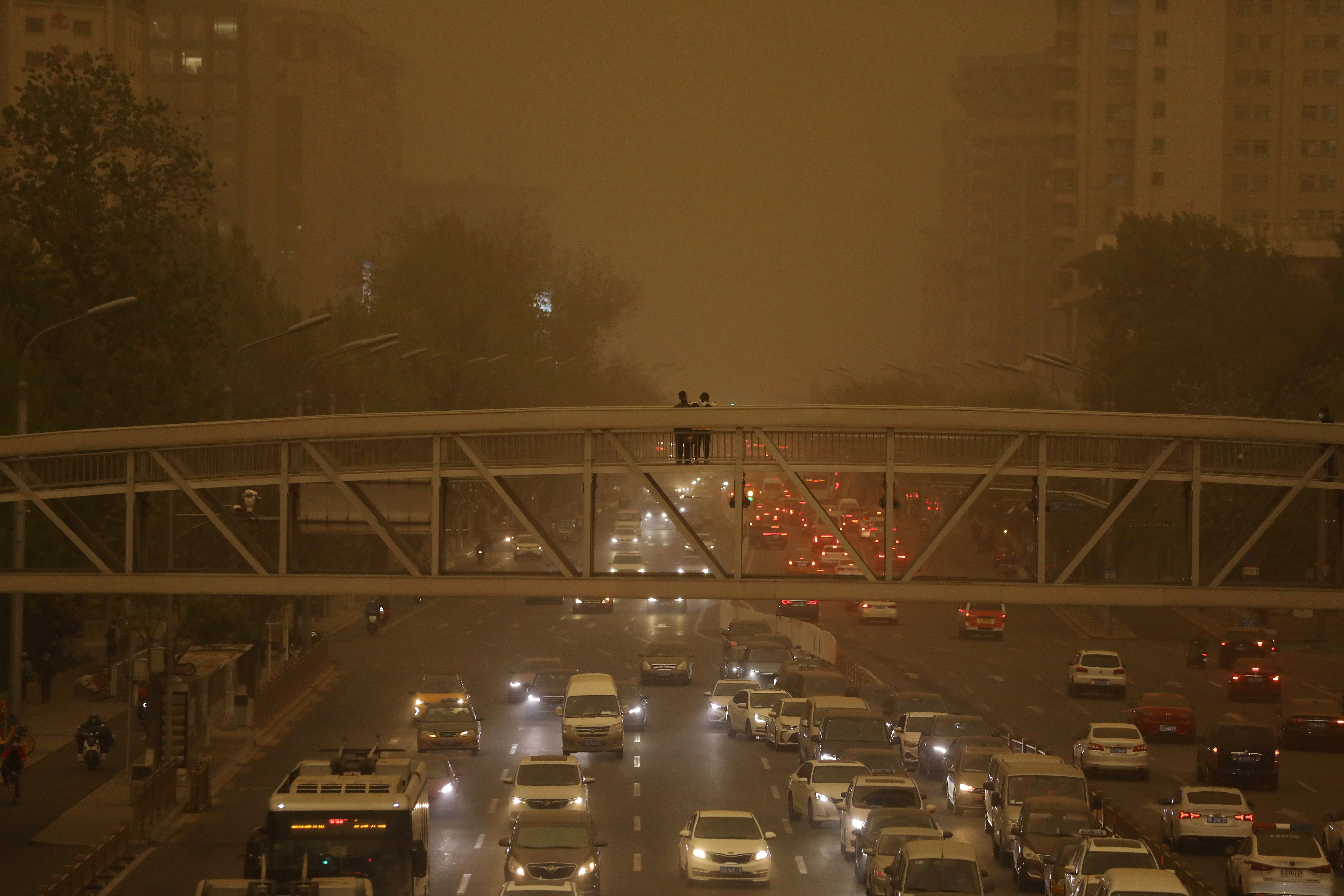
The sky over Beijing turned yellow and air pollution rose to severe levels when a giant cloud of sand and dust particles rolled into the city, propelled by strong winds from northern China.
Beijing’s air quality index rose to 324 from Thursday 4 p.m. local time (8 a.m. GMT), mainly due to larger particles of sand and dust, municipal authorities said.
According to the Swiss IQAir app, it deteriorated to over 1,300 in some parts of the city in the evening.
The particles come from Mongolia and China’s Inner Mongolia region, and high winds are expected to bring the pollutants to central and eastern China by Friday, the China Meteorological Administration said.
The amount of sand in the air was less than that during two sandstorms in northern China last month, but wind speeds were higher, allowing the dusty weather to travel faster and farther, the meteorological administration said.
“I’m not feeling well. We’ve had several dust storms this year,” said Gary Zi, a 48-year-old Beijing resident who works in the financial sector.
“The (air) quality is much worse than in previous years,” he added. “Breathing becomes difficult. Sand gets in your eyes and your nose.”
China typically blames Mongolia’s Gobi Desert for its annual sandstorms.
Delegates from China’s arid Gansu region said in a proposal to parliament last month that more than half of the dust storms that descend on China each year come from abroad, mainly from southern Mongolia.
Beijing plants millions of trees along the border to ward off sand storms, part of a project known as the “Great Green Wall”.
“I feel it’s all climate change,” said another Beijing resident, wiping the dust off his motorcycle near the China World Trade Center, citing only his last name, Xie. “(We) can’t do much about it.”
Our Standards: The Thomson Reuters Principles of Trust.